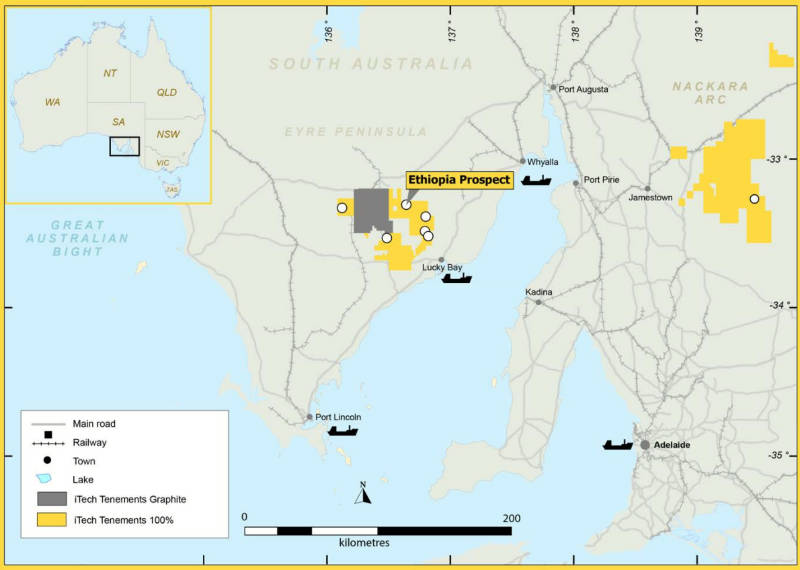ASX’s latest kaolin explorer has exciting rare earths potential

Oooh exciting! iTech has both kaolin and rare earths potential at the Ethiopia prospect. Pic: Getty Images
iTech Minerals has listed on the ASX after raising $7m through its initial public offering to fund exploration of their Eyre Peninsula kaolin project in South Australia.
Demand for kaolin is strong thanks in part to its potential for conversion into high purity alumina (HPA), which is used in a variety of high-tech applications such as coating porous polymer separators that are used in lithium-ion batteries to improve safety.
iTech Minerals (ASX:ITM) has already completed a detailed review of historical data which confirmed that thick intervals of high purity kaolin are present from surface at the Ethiopia prospect.
However, this is not the only thing of interest that the company found.
The review also found elevated levels of cerium in clay-rich intervals, an indicator that ionic adsorption clay rare earth elements may be present.
This type of mineralisation is rarely found outside of China and is generally considered to be some of the cheapest and most readily accessible sources of heavy rare earths, which has been responsible for the strong interest in companies such as Ionic Rare Earths (ASX:IXR) and Mount Ridley Mines (ASX:MRD).
“The most exciting part of this development is the previously overlooked REE potential at the Ethiopia prospect is complementary to the company’s existing kaolin exploration program and gives us a lot more opportunities for exploration success in our upcoming drilling programs,” managing director Mike Schwarz said.

Kaolin and REE potential
The company’s review of 10 of the 41 historical aircore holes at the Ethiopia prospect identified thick intervals, up to 24m, of high-purity kaolin clay over an area of about 1km by 1km.
This potential for high-purity alumina at or near surface confirms the company’s belief that the prospect could provide feedstock for HPA and ceramics.
Samples have been resubmitted for kaolinite and halloysite analysis.
iTech added that the 41 historical aircore holes at the prospect were drilled to test a regional radiometric anomaly for its uranium potential.
While drill samples only returned low levels of uranium and thorium, they found significant quantities of cerium, one of the 17 rare earth elements and an indicator that the other more valuable REEs are present.
Importantly for the company, the kaolin sampling test work concentrates the kaolin clays by removing quartz veins from the sample.
This is expected to increase the REE grade as the REEs are bound to the clays.
Adding to this, historical exploration has also identified several REE-rich source rocks near the prospect.
Not only does this increase the likelihood of discovering IAC-style REE deposits, it also opens up the potential for traditional ‘hard rock’ style REE mineralisation.
However, iTech’s focus is on the coincident kaolin and IAC-style mineralisation due to the potential for low cost mining, processing and extraction of both kaolin and REEs from the same source material.
Next steps
The company is resampling the remaining 31 aircore holes to further assess the kaolin and REE potential of the Ethiopia prospect, with results expected in late November 2021.
It will also kick off mapping and sampling of the kaolin and REE enriched rocks to the southeast of Ethiopia in early November.
iTech is also undertaking detailed reviews at its Franklyn Kaolin-Halloysite project in the Nackara Arc and the Campoona graphite project on the Eyre Peninsula.
This article was developed in collaboration with iTech Minerals, a Stockhead advertiser at the time of publishing.
This article does not constitute financial product advice. You should consider obtaining independent advice before making any financial decisions.
Related Topics

UNLOCK INSIGHTS
Discover the untold stories of emerging ASX stocks.
Daily news and expert analysis, it's free to subscribe.
By proceeding, you confirm you understand that we handle personal information in accordance with our Privacy Policy.








